
Catalog Advanced Search
199 Results
-
Contains 2 Component(s) Includes a Live Web Event on 09/09/2025 at 1:00 PM (EDT)
Join us for an insightful webinar series where you'll hear directly from passionate provider members—including leaders from the AHCA/NCAL Workforce Committee—and other industry experts who are actively shaping the future of long term care. Discover real-world strategies for attracting young talent to the field, including what’s worked, what hasn’t, and why. This is your chance to gain practical insights, ask your most pressing questions, and connect with professionals who are making a difference. Whether you're looking to spark interest in long term care careers or strengthen your workforce pipeline, this session offers valuable takeaways. Registration is free to AHCA/NCAL members. The webinar will be recorded.
Join AHCA/NCAL’s Workforce Committee members, AHCA/NCAL staff, and state affiliate workforce leaders as they share innovative strategies and real-world experiences for engaging youth in the long term care (LTC) field. Learn about creating pathways for young people to explore meaningful careers in LTC.
- Nicole Mattson: Nicole will share various opportunities to engage with youth at local high schools and healthcare focused career and technical education (CTE) programs—serving on advisory boards, hosting clinicals, tours, job shadowing, etc. She will also discuss how to get involved in HOSA and scrubs camps.
- Chris Fisher: Hear Chris discuss - Care For The Aging, a Pennsylvania Health Care Association initiative, addresses the growing need for long-term care workers in Pennsylvania due to its aging population. The campaign educates and recruits students and job seekers for careers in this critical healthcare sector by connecting long-term care providers with schools and educators. This aims to bridge the current caregiver shortage.
- Nathan Woods: Nathan will demonstrate how to strategically use platforms like Facebook, X (formerly Twitter), and LinkedIn to build stronger connections with your local community and support recruitment goals. His presentation will offer platform-specific tips, content planning techniques, and practical examples tailored for long term care organizations.
- Critina Walls: Cristina will discuss how organizations can leverage the tools and resources available on CareersInCare.org to enhance recruitment efforts and align messaging that resonates with your target audience.
Registration is free to AHCA/NCAL members.
If you are not able to attend live, the recording will be provided to you. A certificate of attendance will be available after webinar. (No CEs)
Instructions to Register:
- To avoid technical problems, use Google Chrome.
- Members will need to log in using their existing email and password first.
- Once you are logged in to the website you will be able to register by clicking the green register button at the top of the page.
- If you have forgotten your password click here.
- If you are new to the site, you can create an account here. Answer all fields on the create an account page- especially locating your company name. You can search by name or zip code. After creating an account, you will be able to register for the webinar.
Instructions to join, after registering:
- On the day of the webinar, you will be able to join 15 mins before.
- Log in and return to the contents page to open the webinar.
Email educate@ahca.org if you need assistance.
STATEMENT OF AHCA/NCAL’S ARTIFICIAL INTELLIGENCE (AI) POLICY
To foster an environment of candor and the open exchange of ideas, AHCA/NCAL prohibits the recording of meetings by attendees. This includes but is not limited to any use of artificial-intelligence tools or assistants that record and transcribe information. AHCA/NCAL has the right to immediately remove AI tools or assistants present on calls and placed by attendees.
© 2025 American Health Care Association. All rights reserved. Materials subject to this copyright may be photocopied or distributed for the purpose of nonprofit or educational advancement. The use, photocopying, and distribution for commercial purposes of any of these materials is expressly prohibited without the prior written permission of American Health Care Association.
- Nicole Mattson, VP of Strategic Initiatives, Care Providers of Minnesota
- Chris Fisher, Director, Quality and Clinical Affairs, Pennsylvania Health Care Association
- Nathan Wooden, Social Medica Manager, AHCA
- Cristina Walls, Senior Manager of Public Affairs, AHCA
-
Register
- Member - Free!
- More Information
-
Contains 2 Component(s) Includes a Live Web Event on 08/06/2025 at 2:00 PM (EDT)
Join us for an insightful webinar series where you'll hear directly from passionate provider members—including leaders from the AHCA/NCAL Workforce Committee—and other industry experts who are actively shaping the future of long term care. Discover real-world strategies for attracting young talent to the field, including what’s worked, what hasn’t, and why. This is your chance to gain practical insights, ask your most pressing questions, and connect with professionals who are making a difference. Whether you're looking to spark interest in long term care careers or strengthen your workforce pipeline, this session offers valuable takeaways. Registration is free to AHCA/NCAL members. The webinar will be recorded.
Looking for fresh ideas to inspire the next generation of long term care professionals? Join AHCA/NCAL Workforce Committee members and state affiliate workforce staff as they share firsthand experiences and innovative approaches to engaging youth in their communities and facilities.
- Nicole Mattson: Nicole will share various opportunities to engage with youth at local high schools and healthcare focused career and technical education (CTE) programs—serving on advisory boards, hosting clinicals, tours, job shadowing, etc. She will also discuss how Care Providers of Minnesota led special legislation in 2023 to have work in our sector count towards elective credits. Hear more on the importance of flexible scheduling and scholarships for youth.
- Tina Sandri: Tina will share insights on DC HEAL, which is taking high school graduates from High School CTE programs throughout the District who will receive their CNA credential after graduation (summer 2025). The students will have their CNAs and work with Forest Hills as CNAs. They will enter the Advanced CNA apprenticeship, and at the end of the year, they will become A-CNAs and remain employed with Forest Hills.
- Maggie Messer: Maggie will share the multitude of ways her company engages youth. From career fairs and mock interviews with local high school students to a high school level CNA program, as well as serving as a clinical site.
- Gregory Douglas: Greg will discuss his efforts around CTE & Tech Campus – programs offered to high school students during normal class hours which can provide early credits along with preparation to become a C.N.A. or other healthcare worker related job functions.
Registration is free to AHCA/NCAL members.
If you are not able to attend live, the recording will be provided to you. A certificate of attendance will be available after webinar. (No CEs)
Instructions to Register:
- To avoid technical problems, use Google Chrome.
- Members will need to log in using their existing email and password first.
- Once you are logged in to the website you will be able to register by clicking the green register button at the top of the page.
- If you have forgotten your password click here.
- If you are new to the site, you can create an account here. Answer all fields on the create an account page- especially locating your company name. You can search by name or zip code. After creating an account, you will be able to register for the webinar.
Instructions to join, after registering:
- On the day of the webinar, you will be able to join 15 mins before.
- Log in and return to the contents page to open the webinar.
Email educate@ahca.org if you need assistance.
STATEMENT OF AHCA/NCAL’S ARTIFICIAL INTELLIGENCE (AI) POLICY
To foster an environment of candor and the open exchange of ideas, AHCA/NCAL prohibits the recording of meetings by attendees. This includes but is not limited to any use of artificial-intelligence tools or assistants that record and transcribe information. AHCA/NCAL has the right to immediately remove AI tools or assistants present on calls and placed by attendees.
© 2025 American Health Care Association. All rights reserved. Materials subject to this copyright may be photocopied or distributed for the purpose of nonprofit or educational advancement. The use, photocopying, and distribution for commercial purposes of any of these materials is expressly prohibited without the prior written permission of American Health Care Association.
- Maggie Messer, Director of Talent Acquisition and Engagement, Integritus Healthcare
- Gregory Douglas, Vice President of Government Affairs and Industry Advancement, Gardant Management Solutions
- Tina Sandri, MHSA, LNHA, QCP, RYT-200, President, Forest Hills of DC
- Nicole Mattson, VP of Strategic Initiatives, Care Providers of Minnesota
-
Register
- Member - Free!
- More Information
-
Contains 9 Product(s)
During this series, hear directly from provider members – including AHCA/NCAL workforce committee members – and other experts on these matters on what has and hasn’t worked from their experiences. It is also an opportunity to get your pressing questions answered. Registration is free to AHCA/NCAL members. Each webinar will be recorded.
AHCA/NCAL is holding a webinar series this year focused on workforce related matters impacting our long term care providers across the country. This series is focused on issues from career ladders to getting more youth interested in the long term care field to hiring immigrants and refugees. During this series, hear directly from provider members – including AHCA/NCAL workforce committee members – and other experts on these matters on what has and hasn’t worked from their experiences. It is also an opportunity to get your pressing questions answered.
Registration is free to AHCA/NCAL members.
If you are not able to attend live, the recording will be provided to you. A certificate of attendance will be available after webinar. (No CEs)
Webinar's in this series will include:
- Building the Path: Creating Careers in Long Term Care
- Refugee Workforce Partnerships in Long Term Care
- Career Upskilling: Creating Opportunities to Level Up
- Key Strategies for Retaining Your LTC Workforce
- Building Employee Resiliency through Person-Centered Approaches
- Why Registered Apprenticeship? How It CAN Help Build Your LTC Workforce
- Inspiring the Next Generation: Engaging Youth in Long Term Care: Part 1: Register to Attend Live
- Inspiring the Next Generation: Engaging Youth in Long Term Care: Part 2: Register to Attend Live
Follow the Instructions Below to Register:
- To avoid technical problems, use Google Chrome.
- Members will need to log in using their existing email and password first.
- Once you are logged in to the website you will be able to register by clicking the green register button at the top of the page.
- If you have forgotten your password click here.
- If you are new to the site, you can create an account here. Answer all fields on the create an account page- especially locating your company name. You can search by name or zip code. After creating an account, you will be able to register.
Email educate@ahca.org if you need assistance.
STATEMENT OF AHCA/NCAL’S ARTIFICIAL INTELLIGENCE (AI) POLICY
To foster an environment of candor and the open exchange of ideas, AHCA/NCAL prohibits the recording of meetings by attendees. This includes but is not limited to any use of artificial-intelligence tools or assistants that record and transcribe information. AHCA/NCAL has the right to immediately remove AI tools or assistants present on calls and placed by attendees.
© 2025 American Health Care Association. All rights reserved. Materials subject to this copyright may be photocopied or distributed for the purpose of nonprofit or educational advancement. The use, photocopying, and distribution for commercial purposes of any of these materials is expressly prohibited without the prior written permission of American Health Care Association.
-
Register
- Member - Free!
- More Information
-
Contains 1 Component(s) Includes a Live Web Event on 07/31/2025 at 3:00 PM (EDT)
Join National Quality Award Program staff for essential information and insights to commence your 2026 application process with precision and efficacy. This webinar will outline crucial deadlines, pivotal dates, and resources tailored to enhance applicant support. Participants will gain insight into new educational tools, as well as updates to existing resources. Participants will understand the significance of program policies and how they impact their application. Additionally, participants will also have the chance to get their questions answered.
Join National Quality Award Program staff for essential information and insights to commence your 2026 application process with precision and efficacy. This webinar will outline crucial deadlines, pivotal dates, and resources tailored to enhance applicant support. Participants will gain insight into new educational tools, as well as updates to existing resources. Participants will understand the significance of program policies and how they impact their application. Additionally, participants will also have the chance to get their questions answered.
Registration is free to AHCA/NCAL members.
If you are not able to attend live, the recording will be provided to you. A certificate of attendance will be available after webinar. (No CEs)
Instructions to Register:
- To avoid technical problems, use Google Chrome.
- Members will need to log in using their existing email and password first.
- Once you are logged in to the website you will be able to register by clicking the green register button at the top of the page.
- If you have forgotten your password click here.
- If you are new to the site, you can create an account here. Answer all fields on the create an account page- especially locating your company name. You can search by name or zip code. After creating an account, you will be able to register for the webinar.
Instructions to join, after registering:
- On the day of the webinar, you will be able to join 15 mins before.
- Log in and return to the contents page to open the webinar.
Email educate@ahca.org if you need assistance.
STATEMENT OF AHCA/NCAL’S ARTIFICIAL INTELLIGENCE (AI) POLICY
To foster an environment of candor and the open exchange of ideas, AHCA/NCAL prohibits the recording of meetings by attendees. This includes but is not limited to any use of artificial-intelligence tools or assistants that record and transcribe information. AHCA/NCAL has the right to immediately remove AI tools or assistants present on calls and placed by attendees.
© 2025 American Health Care Association. All rights reserved. Materials subject to this copyright may be photocopied or distributed for the purpose of nonprofit or educational advancement. The use, photocopying, and distribution for commercial purposes of any of these materials is expressly prohibited without the prior written permission of American Health Care Association.
-
Register
- Member - Free!
- More Information
-
Contains 2 Component(s) Includes a Live Web Event on 07/29/2025 at 3:00 PM (EDT)
Attendees will leave with actionable strategies to improve outcomes, reduce administrative burden, and deliver better care under evolving managed care rules. Registration is free to AHCA/NCAL members and $65 non-members. If you are not able to attend live, the recording will be provided to you.
Recent Medicare Advantage (MA) rule changes have introduced critical tools to help skilled nursing facilities (SNFs) better manage claims denials and early termination of services. The Calendar Year (CY) 2024 Final Rule brought long-overdue improvements to transparency and accountability in the appeals process, helping reduce improper denials and clarify reimbursement pathways.
Building on this, the CY 2025 Final Rule—effective January 1, 2025—empowers SNFs with access to independent reviews and the ability to escalate cases to an Administrative Law Judge (ALJ). These changes are an important step in breaking the cycle of insurer-dominated appeals and ensuring fairer outcomes.
This session will focus on best practices to:
- Utilize independent review processes effectively.
- Escalate denials strategically to maximize reimbursement.
- Strengthen internal workflows to ensure compliance and timely responses.
- Proactively manage early terminations of services with documentation and appeal readiness.
Attendees will leave with actionable strategies to improve outcomes, reduce administrative burden, and deliver better care under evolving managed care rules.
Speakers: Christy Beard, AVP, Clinical Reimbursement, National Healthcare Corporation; Jay Nason, Senior Regional Vice President, NHC Eastern Region; Maureen McCarthy, Celtic Consulting
Registration is free to AHCA/NCAL members and $65 non-members.
If you are not able to attend live, the recording will be provided to you.
Instructions to Register:
- To avoid technical problems, use Google Chrome.
- Members will need to log in using their existing email and password first.
- Once you are logged in to the website, you will be able to register by clicking the green register button at the top of the page.
- If you have forgotten your password, click here.
- If you are new to the site, you can create an account here. Answer all fields on the create an account page- especially locating your company name. You can search by name or zip code. After creating an account, you will be able to register for the webinar.
Instructions to join, after registering:
- On the day of the webinar, you will be able to join 15 mins before.
- Log in and return to the contents page to open the webinar.
- For optimal performance, please use the latest version of Chrome, Firefox, Edge, or Safari 14+. Internet Explorer is not supported. Disable pop-up blockers in your browser settings. A wired internet connection is recommended over WiFi for stable bandwidth.
- Ensure your speakers are unmuted and functioning correctly.
Email educate@ahca.org if you need assistance.
STATEMENT OF AHCA/NCAL’S ARTIFICIAL INTELLIGENCE (AI) POLICY
To foster an environment of candor and the open exchange of ideas, AHCA/NCAL prohibits the recording of meetings by attendees. This includes but is not limited to any use of artificial-intelligence tools or assistants that record and transcribe information. AHCA/NCAL has the right to immediately remove AI tools or assistants present on calls and placed by attendees.
© 2025 American Health Care Association. All rights reserved. Materials subject to this copyright may be photocopied or distributed for the purpose of nonprofit or educational advancement. The use, photocopying, and distribution for commercial purposes of any of these materials is expressly prohibited without the prior written permission of American Health Care Association.
-
Register
- Non-member - $65
- Member - Free!
- More Information
-
Contains 2 Component(s) Includes a Live Web Event on 07/22/2025 at 1:30 PM (EDT)
Registration is free to AHCA/NCAL members and $65 for non-members. If you are not able to attend live, the recording will be provided to you.
Join Jensen Hughes and the National Center for Assisted Living (NCAL) for an in-depth walkthrough of NCAL’s new Assisted Living Emergency Preparedness and Procedure Manual. This essential resource is designed to help assisted living providers meet regulatory expectations, strengthen emergency readiness, and protect residents and staff during crises. This session will provide an overview of the manual’s key components, walk through practical strategies for customizing content to your facility, and show how to transform the manual into a fully functional Emergency Preparedness Program. Through real-world examples and expert insights, attendees will gain the tools and confidence to apply the manual effectively and build a program tailored to their risks, residents, and operational realities.
By the end of this webinar, participants will be able to:
- Understand the structure, content, and purpose of NCAL’s Assisted Living Emergency Preparedness and Procedure Manual.
- Identify which elements of the manual require customization to reflect their specific facility risks, resources, and operational context.
- Apply practical tips and best practices for adapting the manual into a living, site-specific Emergency Preparedness Program.
- Develop a clear action plan to engage stakeholders, integrate emergency preparedness into daily operations, and ensure ongoing program sustainability and compliance.
Registration is free to AHCA/NCAL members and $65 non-members.
If you are not able to attend live, the recording will be provided to you.
Instructions to Register:
- To avoid technical problems, use Google Chrome.
- Members will need to log in using their existing email and password first.
- Once you are logged in to the website, you will be able to register by clicking the green register button at the top of the page.
- If you have forgotten your password, click here.
- If you are new to the site, you can create an account here. Answer all fields on the create an account page- especially locating your company name. You can search by name or zip code. After creating an account, you will be able to register for the webinar.
Instructions to join, after registering:
- On the day of the webinar, you will be able to join 15 mins before.
- Log in and return to the contents page to open the webinar.
- For optimal performance, please use the latest version of Chrome, Firefox, Edge, or Safari 14+. Internet Explorer is not supported. Disable pop-up blockers in your browser settings. A wired internet connection is recommended over WiFi for stable bandwidth.
- Ensure your speakers are unmuted and functioning correctly.
Email educate@ahca.org if you need assistance.
STATEMENT OF AHCA/NCAL’S ARTIFICIAL INTELLIGENCE (AI) POLICY
To foster an environment of candor and the open exchange of ideas, AHCA/NCAL prohibits the recording of meetings by attendees. This includes but is not limited to any use of artificial-intelligence tools or assistants that record and transcribe information. AHCA/NCAL has the right to immediately remove AI tools or assistants present on calls and placed by attendees.
© 2025 American Health Care Association. All rights reserved. Materials subject to this copyright may be photocopied or distributed for the purpose of nonprofit or educational advancement. The use, photocopying, and distribution for commercial purposes of any of these materials is expressly prohibited without the prior written permission of American Health Care Association.
-
Register
- Non-member - $65
- Member - Free!
- More Information
-
Contains 2 Component(s)
Some skilled nursing facilities (SNFs) have implemented a specific diet standard, titled the International Dysphagia Diet Standardisation Initiative (IDDSI). The IDDSI Framework Documents provide guidelines to produce safer food and drinks for residents who benefit from a texture modified diet. Implementation of IDDSI requires coordinated teamwork to align efforts with facility goals, including improving safety. Registration is free to everyone.
Some skilled nursing facilities (SNFs) have implemented a specific diet standard, titled the International Dysphagia Diet Standardisation Initiative (IDDSI). The IDDSI Framework Documents provide guidelines to produce safer food and drinks for residents who benefit from a texture modified diet. Implementation of IDDSI requires coordinated teamwork to align efforts with facility goals, including improving safety.
This free webinar covers how to approach your IDDSI plan through:
- Understanding why incorporating this change is important.
- How preparing foods that meet IDDSI definitions can best accommodate your residents’ needs.
- Why and how QAPI provides the structure for full implementation.
1 CEU for Certified Dietary Managers by CBDM, the credentialing body of ANFP.
Registration is free to everyone.
Follow the Instructions Below to Register:
- To avoid technical problems, use Google Chrome.
- Members will need to log in using their existing email and password first.
- Once you are logged in to the website you will be able to register by clicking the green register button at the top of the page.
- If you have forgotten your password click here.
- If you are new to the site, you can create an account here. After creating an account, you will be able to register.
Instructions to begin, after registering:
- To open the on-demand webinar, click on the Contents tab. Click "view archived recording"
- A copy of the presentation slides and handouts are also available to download here.
Email educate@ahca.org if you need assistance.
Mary Rybicki, MS, RDN, LDN
Mary Rybicki, MS, RDN, LDN, is a dietitian with diverse clinical and management experience in post-acute care settings. She has worked within multiple healthcare settings for quality improvement processes, including of texture modified foods, and for assistance with the transition to IDDSI. She has presented on the IDDSI topic within variable settings and is a volunteer on the United States IDDSI Reference Group (USIRG). Mary has an MS in Dietetics from MGH Institute of Health Professions and a MMHS, Master of Management of Human Services, from Brandeis University. She is the recipient of the Academy’s 2024 Excellence in Consultant Practice Award, recognizing her demonstrated excellence and leadership.
Jen Bruning, MS, RDN, LDN
Jen Bruning MS, RDN, LDN, serves as the Director of Partner Education for Incite Strategic Partners, the exclusive GPO for AHCA/NCAL. Prior to coming to Incite, Jen spent her dietetics career in food service, in both the corporate wellness and senior living sectors helping to shape the dining experience of clients around the country. She has previously held the positions of professor of nutrition at Columbia College Chicago, Wellness Director & Nutrition Strategist for large national food service providers, and both clinical and food service leadership roles in a skilled nursing environment. Jen has served nine years as a National Media Spokesperson for the Academy of Nutrition & Dietetics and speaks nationally on dining and nutrition related topics for busy senior living professionals.
-
Register
- Non-member - Free!
- Member - Free!
- More Information
-
Contains 2 Component(s)
This free webinar reviews food procurement pitfalls, the risks to utilizing informal/ unregulated product supply channels, and how to operate closer to budget when economic challenges arise. Experts from Incite Strategic Partners will examine real-world examples of what steps to take and which to avoid when navigating budget challenges, product shortages, and fluctuating prices. 1 CEU for Certified Dietary Managers by CBDM, the credentialing body of ANFP. Registration is free to everyone.
This free webinar reviews food procurement pitfalls, the risks to utilizing informal/ unregulated product supply channels, and how to operate closer to budget when economic challenges arise. Experts from Incite Strategic Partners will examine real-world examples of what steps to take and which to avoid when navigating budget challenges, product shortages, and fluctuating prices. Learning objectives include:
- Review common food procurement mistakes and how to avoid them.
- Understand the key elements of a reliable product supply channel.
- Tips for managing food budgets and programs when census drops or prices and supply chains are unpredictable.
Approved for 1 CEU for CDMs.
Registration is free to everyone.
Follow the Instructions Below to Register:
- To avoid technical problems, use Google Chrome.
- Members will need to log in using their existing email and password first.
- Once you are logged in to the website you will be able to register by clicking the green register button at the top of the page.
- If you have forgotten your password click here.
- If you are new to the site, you can create an account here. After creating an account, you will be able to register.
Email educate@ahca.org if you need assistance.
Jen Bruning, MS, RDN, LDN
Jen Bruning MS, RDN, LDN, serves as the Director of Partner Education for Incite Strategic Partners, the exclusive GPO for AHCA/NCAL. Prior to coming to Incite, Jen spent her dietetics career in food service, in both the corporate wellness and senior living sectors helping to shape the dining experience of clients around the country. She has previously held the positions of professor of nutrition at Columbia College Chicago, Wellness Director & Nutrition Strategist for large national food service providers, and both clinical and food service leadership roles in a skilled nursing environment. Jen has served nine years as a National Media Spokesperson for the Academy of Nutrition & Dietetics and speaks nationally on dining and nutrition related topics for busy senior living professionals.
Nick Trankito
Nick manages and grows relationships with Incite’s National and State Partner Associations. He has spent his career supporting GPO members with their continuum of care and has earned a reputation as a member advocate and group purchasing expert. Nick’s mission is to connect association partners and their members with resources they need to succeed and thrive in patient care.
-
Register
- Non-member - Free!
- Member - Free!
- More Information
-
Contains 37 Component(s), Includes Credits
CMS Mandates Extra Training to Qualify as an Infection Preventionist. IPCO Delivers that Training! Become a specially trained and qualified Infection Preventionist by completing the American Health Care Association’s Infection Preventionist training. Cost: $450 AHCA/NCAL members | $650 Non-members. If you are unsure of your member status, please email educate@ahca.org before making payment.
Welcome!
AHCA/NCAL’s Infection Preventionist Specialized Training (IPCO) is recommended for individuals responsible for infection prevention and control in all long term care settings and is specifically tailored to train Infection Preventionists (IPs) in nursing facilities.
CMS mandates that every nursing facility have a designated and specially trained Infection Preventionist who is running a comprehensive infection prevention and control program. AHCA recommends that nursing facilities train at least two clinical staff members as IPs should one IP leave or be unavailable.
The comprehensive IPCO training covers:
- COVID-19
- Other common pathogens
- Multidrug-resistant organisms
- Antibiotic stewardship
- Water management and more
About the online training:
- Flexible and self-paced (take up to 12 months to complete)
- Online learning 24/7
- 9 course modules
Cost: $450 AHCA/NCAL members | $650 Non-members
Group purchase with discount structure is available for groups of five or more. There are no refunds and no transfers. Visit the FAQs to know more about the discount offered.
Objectives
Individuals who successfully complete this course will learn how to:
- Demonstrate how to effectively manage an Infection Prevention and Control Program within a nursing or assisted living facility
- Convey to staff effective strategies to prevent infections
- Implement practices and procedures to mitigate infections
- Evaluate practices and policies related to infection prevention
- Provide on-going education to others including staff, residents and families
Individual module objectives are found in the module resource tab within the module presentations and in the User Guide. Participants must complete all training modules and successfully pass module quizzes and final test with a grade of 80 or above to receive a certificate of completion from AHCA that is valid for three years.
Accredited Continuing Education
In support of improving patient care, this activity has been planned and implemented by University of Nebraska Medical Center and American Health Care Association. University of Nebraska Medical Center is jointly accredited by the Accreditation Council for Continuing Medical Education (ACCME), the Accreditation Council for Pharmacy Education (ACPE), and the American Nurses Credentialing Center (ANCC), to provide continuing education for the healthcare team.
NURSES/NURSE PRACTITIONERS
The University of Nebraska Medical Center designates this activity for 24.5 ANCC contact hours. Nurses should only claim credit for the actual time spent participating in the activity.
Certificates
Three certificates will be awarded upon successful completion of the program:
- UNMC CON CiPDI will provide a certificate awarding 24.5 contact hours.
- AHCA will provide a Specialized Training Completion certificate, valid for 3 years.
- 24.5 continuing education hours (CEs) from the National Association of Long Term Care Administrator Boards (NAB)
Certificates Renewal - specialized training completion certificates are valid for 3 years. Click here for information about renewing your AHCA IPCO Certificate.
If you are not sure of your member status, please email educate@ahca.org before making payment.
© 2025 American Health Care Association. All rights reserved. All Infection Preventionist Specialized Training (IPCO) materials subject to this copyright may be photocopied or distributed for the purpose of nonprofit or educational advancement. The use, photocopying, and distribution for commercial purposes of any of these materials is expressly prohibited without the prior written permission of American Health Care Association.
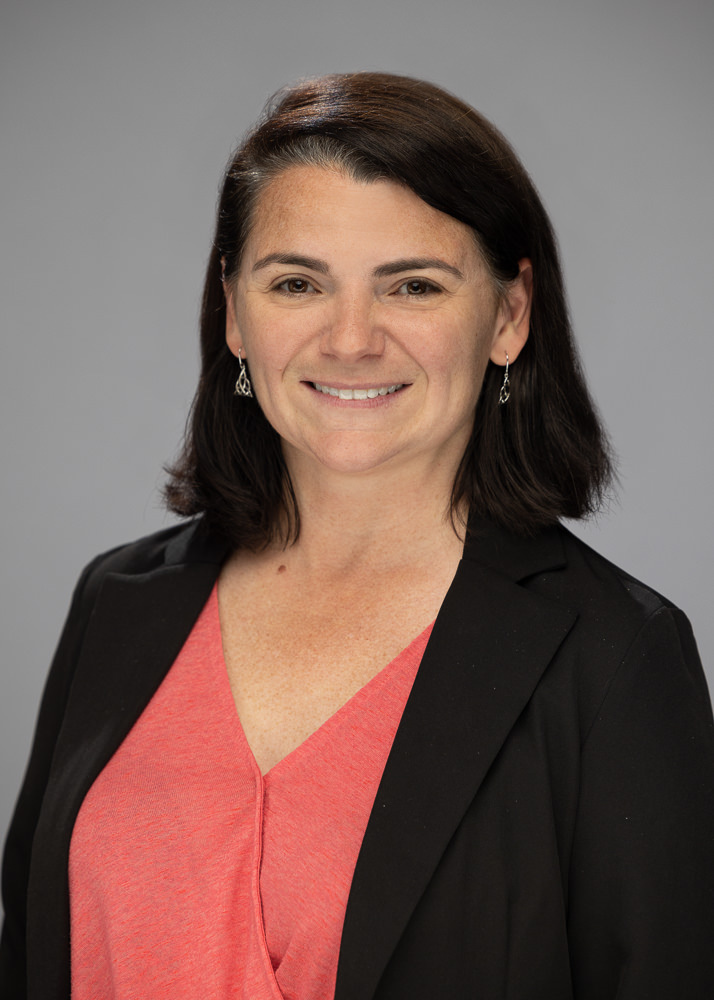
Holly Harmon, RN, MBA, LNHA, FACHCA
Senior VP, Quality, Regulatory & Clinical Services
American Health Care Association
Holly Harmon, RN, MBA, LNHA, FACHCA brings both passion anda wealth of practical, real-world, clinical and operational experience to herrole as Senior Director of Clinical Services at AHCA. Her extensive service ina wide array of settings including post-acute care, long term care, residentialcare, assisted living, independent living, a psychiatric hospital andoccupational health have provided her with insights, knowledge, skills andinnovative ideas which she exuberantly shares with others.
In addition to her vast clinical experience, Ms. Harmon hasput her dynamic energy into leading the statewide Maine Culture ChangeCoalition/LANE as President, the Maine Partnership to Improve Dementia Care inNursing Homes as Co-Chair, Vice-President of American College of Health CareAdministrators, Maine Chapter and the Maine LANE Co-Convener for the nationalAdvancing Excellence in America’s Nursing Homes Campaign. She also served asthe Director of Quality Improvement & Regulatory Affairs at the MaineHealth Care Association.
She puts her boundless energy and warm and energeticpersonality into training, education and presenting both, nationally andlocally. She has made simplifying the complex world of long term and post-acutecare policy and practice an art.
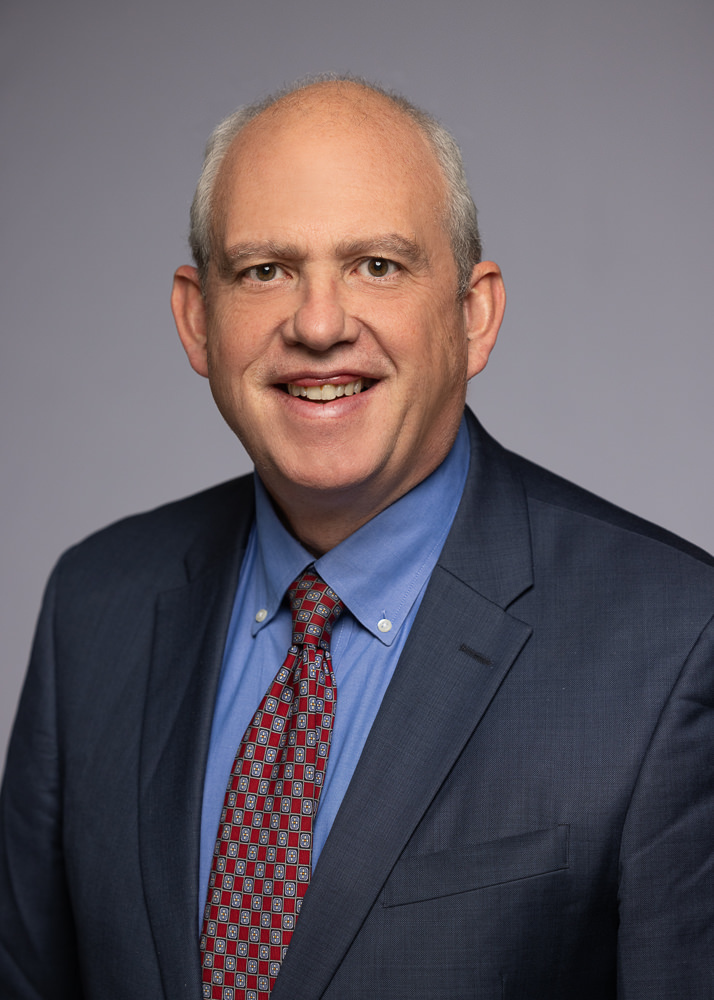
David Gifford, MD, MPH
Chief Medical Officer , AHCA
Chief Medical Officer, AHCA David Gifford, MD, MPH, is a geriatrician and former medical director of several nursing homes in Rhode Island. He currently serves as the Chief Medical Officer at the American Health Care Association. He helped create the Quality Department at AHCA which assists providers in their quality improvement efforts and works with administration officials on regulations and policies impacting the profession.
Dr. Gifford also serves on the Board of the Advancing Excellence in America’s Nursing Homes campaign and the Baldrige Foundation Board. He is a former Director of the Rhode Island State Department of Health, where he received the National Governor’s award for Distinguished Service Award for State Officials. Prior to that he served as Chief Medical Officer for Quality Partners of Rhode Island where he directed CMS’ national nursing home-based quality improvement effort. He also holds a faculty appointment at Brown University Medical School and School of Public Health. He received his medical degree from Case Western Reserve University and conducted his geriatric fellowship at UCLA where he also earned his Master’s in Public Health while a Robert Wood Johnson Clinical Scholar.
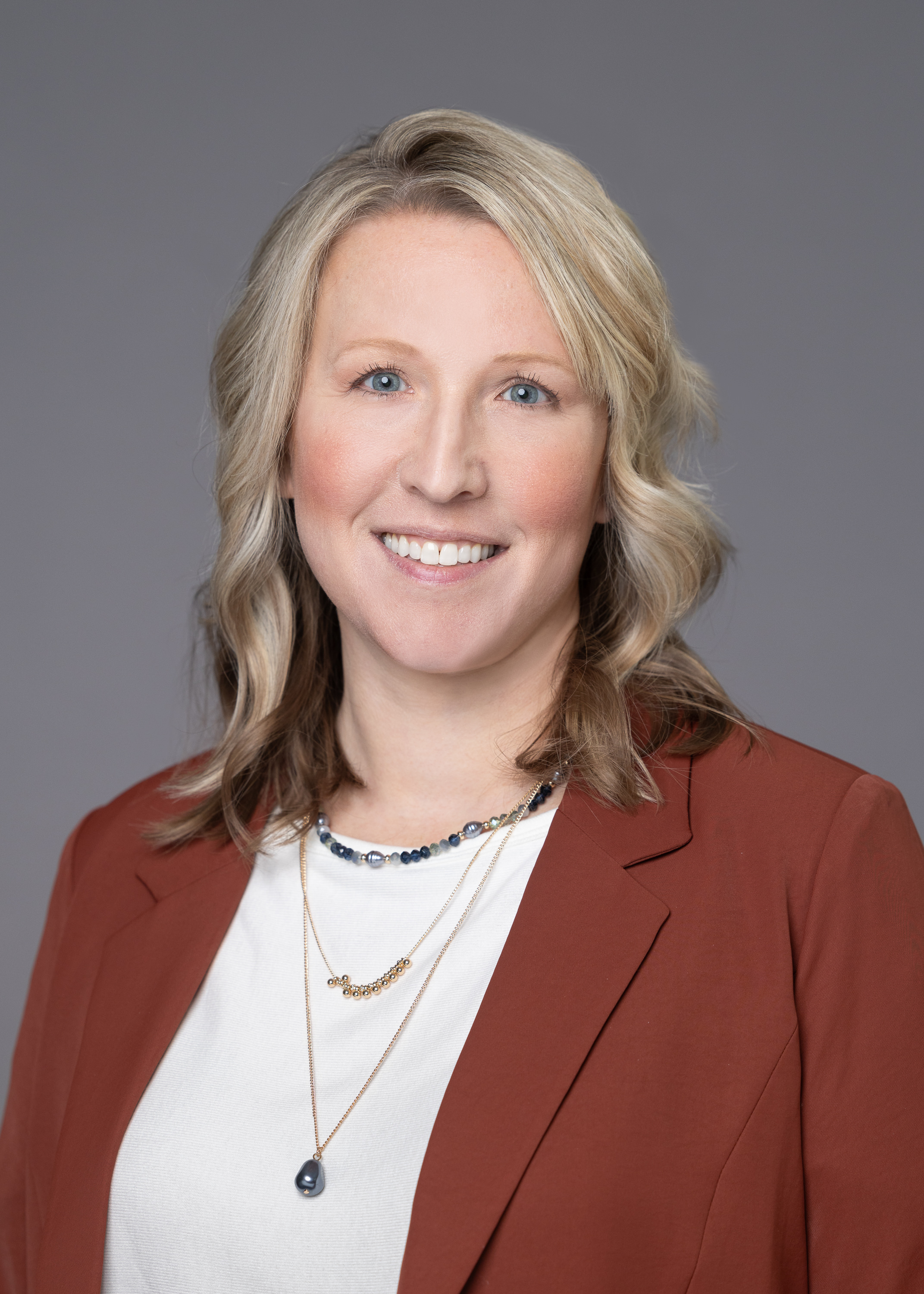
Amy Miller, RN, BSN, RAC-CT, CPC
Director, Clinical & Regulatory Services
American Health Care Association
Amy Miller is currently the Director of Clinical and Regulatory Services with the American Health Care Association. She is a registered nurse with over 25 years of experience in skilled nursing and long-term care. She has her Bachelor of Science Degree in Nursing from Misericordia University in Pennsylvania, is a certified professional coder with the AAPC, and is also a certified resident assessment coordinator.

Marguerite McLaughlin, BS, MA
Director of Education and Transformation, Healthcentric Advisors
MARGUERITE M. McLaughlin is the Director of Education and Transformation, Healthcentric Advisors . She has worked in the nation’s capital as Senior Director of Quality Improvement at AHCA. She pursues her passion for improving the lives of residents living in long term care centers by developing educational resources, tools and products for staff, and consulting with staff to improve quality within nursing centers. Ms. McLaughlin is an enthusiastic educator and trainer working both locally and nationally to support change in healthcare. Her 30+ years of experience – at Saint Elizabeth Home, the Alzheimer’s Association and the Healthcentric Advisors (the state’s Quality Improvement Organization) have provided her with unique insights and “boots on the ground” experience in helping organizations improve care and service to their residents. She has served as liaison to the Industry Partnership for Healthcare under the Governor’s Workforce Board-Rhode Island. In this role she provided solutions to bridge the skills gaps within the healthcare industry. She was Co-Chair of SAGE-RI for six years. She earned a Master’s degree in Holistic Counseling at Salve Regina and applies this knowledge to individualized care and organizational culture.

Janet Snipes, NHA
Janet Snipes NHA is currently retired. She served on the Colorado Health Care Association Board of Directors for over 20 years and was the Chairman of the Board from 2004-2014. She served as Chair of the American Health Care Association (AHCA) Quality Improvement Committee from 2010 to 2014.

Stefan Gravenstein, MD, MPH
Director, Geriatrics and Palliative Medicine, Professor of Medicine, Alpert Medical School of Brown University
Warren Alpert Medical School of Brown University
A geriatrician, former John Franklin Chair of Geriatrics and Director of the Glennan Center for Geriatrics and Gerontology at Eastern Virginia Medical School (1996-2007), and Director of Center for Geriatrics and Palliative Care at University Hospitals in Cleveland (2014-2017), Stefan Gravenstein is now the David S. Greer Professor of Geriatrics and Professor in the departments of Medicine and Health Services Policy and Practice at Brown's schools of medicine and public health. He serves as the Director, Division of Geriatrics and Palliative Medicine at the Alpert Medical School of Brown University and Associate Director of the Center on Innovation in Long-Term Services and Supports at the Providence Veterans Administration Medical Center. Dr. Gravenstein has a long-standing interest in immunity, inflammation, cardiovascular outcomes and aging especially in the context of vaccines and the long-term care setting, and the topic of the majority of his publications. He also has a specific interest in quality improvement in health care, the culture of care, antimicrobial stewardship, and how to improve care transitions. Beginning n 2020, he became active in several projects related to COVID in long-term care. He was Clinical Director at Healthcentric Advisors, Medicare's Quality Improvement Organization for New England from 2007 to 2019. 
Elie Saade, MD, MPH
System Director, Medical Quality and Infection Control, University Hospitals, Cleveland, Ohio
Dr. Elie Saade is System Director, Medical Quality and Infection Control, University Hospitals, Cleveland, Ohio. He specializes in infectious diseases.

Janet Robinson, RN, MEd, CIC
Retired
Ms. Robinson is currently retired. She was board certified in infection control with more than twenty-five years of consulting experience in long-term care facilities. She was an accomplished public speaker and educator in the area of long-term care infection control. In collaboration with the Rhode Island Department of Health as well as the American Health Care Association, she contributed to the development of guidelines and training materials.

Linda Behan, BSN, RN, CIC
Consultant, Long Term Care Infection Prevention, LLC
Linda Behan BSN, RN, CIC is the Consultant for Long Term Care Infection Prevention, LLC . Linda has been certified in infection prevention and control for over 10 years. She leads a team of Infection Preventionists in developing policies and procedures as well as developing and delivering education across the company. Linda serves on the APIC Professional Development Committee and frequently presents at healthcare and professional organization conferences.
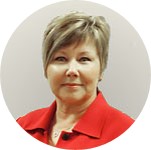
Gail Polanski, RN, BSN
Clinical Consultant, Tara Cares, LLC
Gail Polanski RN, BSN serves as Clinical Consultant, Tara Cares, LLC. Gail has more than 30 years of experience in senior management positions. Her expertise includes the delivery of rehabilitation services, denials management, compliance, and case mix management. She is knowledgeable of Medicare regulations and managed care contractual requirements.
Prior to joining Tara Therapy, Gail was an independent consultant and entrepreneur. As owner of MG Healthcare Solutions, she provided consulting services to clients across the country on the changing Medicare payment program and SNF PPS regulations. Gail has presented at national conventions and is currently an active member of the AHCA Clinical Practice Committee and serves as the co-chair for the MDS/IMPACT subcommittee.

Stacey Merritt Hord, LNHA, MCD, CCC-SLP
Chief Business Development Officer, Associated Care Ventures
Stacey Merritt Hord is the 2016/2017 Chair of the AHCA/NCAL Quality Improvement Committee and Vice President of Quality for Golden Living, the 3rd largest long term care provider in the country. Stacey is a health care executive with expertise in educating, deploying and sustaining Baldrige as a Business Model in post acute care and other sectors. Facilities under her operational oversight as an LNHA received AHCA Bronze and Silver recognition along with Alabama Level 1 Commitment to Excellence, Level 2 Progress Toward Excellence, and Level 3 Alabama Excellence recognition. Her faculty experience includes the AHCA/NCAL national convention, Alabama Quality Award Conference, AHCA Quality Symposium/Summit, Georgia Health Care Association Convention, and other venues. Stacey served on the panel of experts for the AL Quality Award Conference from 2004 - 2008 and has served as an AHCA Quality Award Examiner in multiple roles (Bronze, Silver, Silver Team Leader, Master Examiner) since 2002. She served as a member of the AHCA Quality Improvement Committee (QIC) and AHCA QAPI subcommittee from 2012- 2015. In addition, Stacey served as Chair of the 2015 QAPI Tools and Resources WorkGroup for the Quality Improvement Committee.
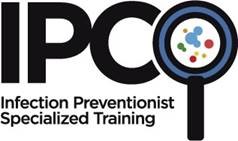
Frequently Asked Questions
What is the AHCA Infection Preventionist Specialized Training (IPCO)?
It is a specialized training for healthcare professionals who desire to serve as Infection Preventionists (IPs) as established in the CMS Reform of Requirements of Participation for Long Term Care Facilities (required by November 2019). Through this program, individuals will be specially trained to effectively implement and manage an Infection Prevention and Control Program in a nursing center.
Do you have to be an AHCA member to register for IPCO?
No. Both AHCA members and nonmembers are eligible to participate in the IPCO course.
How much does it cost to take the IPCO training?
Registration fee: $450 members, $650 nonmembers. Payment and registration is completed by individual participant in the IPCO product in ahcancalED.
How can an individual register and pay for IPCO?
The individual who wants to take the IPCO course must login to ahcancalED and register for the course under their individual login. Payment will be made in ahcancalED upon registration via credit card or E-check. Please be sure to have your credit card or banking information ready at checkout. Paying by credit card or E-check will grant automatic access to the course. Registrations for IPCO cannot be done by another person or under another person’s ahcancalED login.
-- for a better web experience, please use Google Chrome Internet Browser and NOT Internet Explorer.
How can an organization group register and pay for IPCO?
Group purchase is available for groups of 5 or more. AHCA offers the following discount structure for groups: 5-49 registrations will receive $25 off each registration. 50 or more registrations will receive $75 off each registration.
After full payment is made for group purchase of IPCO, the designated individuals who the IPCO registration payment was made for, will be provided with a unique group code for their group which will translate to $0 due upon registration (because full payment has already been received). One code will be provided for each group with a max allowance of times that the code can be used based on the group’s payment.
Each individual will need to login to the AHCA website to access ahcancalED and then complete their own registration using the group code.
Can I get a refund on the IPCO product if I no longer want to take the course?
No refunds are issued for IPCO.
Can my IPCO registration be transferred to a colleague?
IPCO registrations cannot be transferred. The individual that registers for the course is the only one that has access to it.
Who is eligible to take this training?
Anyone can take this training. The AHCA Infection Preventionist Specialized Training does not require a particular healthcare license.
AHCA/NCAL recommends that administrators also consider taking the course to gain a deeper understanding of infection prevention and control in the overall operation of the building. Just a reminder that administrators should not serve as designated Infection Preventionists unless they have separate formal advanced clinical training and/or licensing such as a nursing license.
Please note, there are specific requirements for the individual(s) who will serve as Infection Preventionist(s). CMS requirements for a designated Infection Preventionist state:
483.80 (b) Infection preventionist. The facility must designate one or more individual(s) as the infection preventionist(s) (IPs) who are responsible for the facility’s IPCP. The IP must:
(1) Have primary professional training in nursing, medical technology, microbiology, epidemiology, or other related field;
(2) Be qualified by education, training, experience or certification;
(3) Work at least part-time at the facility; and
(4) Have completed specialized training in infection prevention and control.
What are the requirements to successfully complete IPCO?
Participate in each module and successfully complete quizzes throughout the course and final test (achieve at least 80% correct each time)
Modules 1-7 will have quizzes with 5 questions (4 of 5 questions must be accurately completed) except for module 3 which will have 10 questions (8 of 10 questions must be accurately completed).
The final test after Module 9 will have 20 questions (16 of 20 questions must be accurately completed)
Each module quiz may be attempted three times before the participant is required to repeat the module and then reattempt answering questions.
Complete course evaluation after each module and at the end of the course.
Course completion must occur within 12 months of the date the registrant starts the first required component of the program; which is the copyright agreement.(not registration date)
How long does it take on average to complete the IPCO course?
The learning time of all modules, review of additional resources, time to complete the modules and final course evaluations and quizzes/final test accounts for 24 hours and 30 minutes.
Participants are encouraged to spread out the course over time in an organized manner – such as scheduling module reviews on various dates/times when they can focus their attention to it. The course could be completed within a week or over several months based on how the individual would like to approach the program.
Are Contact Hours awarded for IPCO?
Yes, 24.5 ANCC contact hours and 24.5 continuing education hours (CEs) from the National Association of Long Term Care Administrator Boards (NAB) are available for completion of this program.
In support of improving patient care, this activity has been planned and implemented by University of Nebraska Medical Center and American Health Care Association. University of Nebraska Medical Center is jointly accredited by the Accreditation Council for Continuing Medical Education (ACCME), the Accreditation Council for Pharmacy Education (ACPE), and the American Nurses Credentialing Center (ANCC), to provide continuing education for the healthcare team.
What does a participant get when they complete the IPCO course?
Participants receive three certificates at the completion of IPCO:
- UNMC CON CiPDI will provide a certificate awarding 24.5 contact hours to participants who successfully achieve the completion requirements.
- 24.5 continuing education hours (CEs) from the National Association of Long Term Care Administrator Boards (NAB)
- Specialized Training Completion certificate from AHCA, valid for 3 years.
How long do the certificates last?
The CE certificates do not expire. The Specialized Training Completion certificate expires after 3 years from issue date.
How can someone renew their IPCO certificate?
Renewal may occur by the options below:
Option 1: Registering for a competency exam requiring a grade of 80% or above to successfully receive certificate of renewal. This option is only available to individuals who have previously successfully completed the full IPCO course and are seeking renewal.
Option 2: Registering for the IPCO course and completing the course requirements as outlined above.
Is IPCO a certification?
No, IPCO is a specialized training program with a certificate upon successful completion. While it is not a certification, IPCO does meet both the content and intensity/duration of CMS requirements to serve as an Infection Preventionist.
Does IPCO meet CMS requirements?
Yes, IPCO meets the expectations CMS has outlined on the required components of the specialized training.
CMS is not endorsing any particular training, rather CMS is focused on the content and intensity/duration of what will meet the specialized training requirement. Based on information AHCA received from CMS, the IPCO training meets both the content and intensity/duration of CMS requirements.
Can I print the presentation slides and how can I access the resources within the module?
Each module contains a resource guide which includes a copy of the presentation and any necessary supporting documents discussed within the module. This resource guide can be found at the top right corner within each module.
I am having technical difficulties with IPCO, can you help?
Please email us at educate@ahca.org.
"What a great program! I was able to complete at my own pace and learned a lot." - Connie Francioli, RN,WCC, Director of Nursing, Odd Fellow & Rebekah Rehabilitation RHCC Inc.
"The AHCA IPCO program gave me the tools I needed to be effective in my role as the Infection Preventionist and to initiate an antibiotic stewardship program. The modules and website were easy to navigate and very convenient for my schedule. Thanks a bunch!"- Adriana Casale, BSN, RN, Assistant Director of Nursing Services, Roberts Health Centre
"I thoroughly enjoyed the course. I am a new to the Infection Prevention world and this engaging and interactive course provided an excellent foundation for me. I hope to use this as a stepping stone to advance the Infection Prevention culture within my facility and my community." - Daniel Mazzone, Associate Director of Nursing and Infection Preventionist at the Acadia Center for Nursing
"The IPCO training was intense but I gained the confidence to implement key initiatives in our facility, including antibiotic stewardship. I have a lot to learn but I know I can go back to the course and get the information I need with any situation that I am confronted with." - Karla Ruther, Clarence Senior Living Director of Nursing
"I really enjoyed the IPCO program. It is full of knowledge and information for any infection control program. I would like to see more infection control class with updates on organisms and new ROPs." - Helen Durden, RN, Education Coordinator, Eagle Health and Rehabilitation
"This course was a good blend of review, new information and practical tools for program improvement in both skilled and long term care settings. I would recommend for any nurse interested in Infection control and prevention." - Becci St Laurent | Senior Director of Education, Palm Healthcare Management, llc
"I am recommending it to our Corporate Team members here at Laurel Health Care. I know some Associate Team members at Ciena Heath Care have taken this training program, as well, and were very satisfied. It really enhances and clarifies so much Infection Control information. I feel much more confident with being and Infection Control practitioner." - Marlissa Corby, Corporate Compliance Officer, Laurel Health Care Company
How can an organization group register and pay for IPCO?
One user can purchase multiple registrations for other users by adding them to their cart during the checkout process; using the button displayed in image below. (This can only be done if all individuals have an ahcancalED account.) The price of the training will be based on each registrant’s member type (member or non-member).

*payment tip: please be sure when you are paying with a credit card the bill-to and shipping address are the same*
Group purchase is available for groups of 25 or more. If you are interested in group purchasing, please email educate@ahca.org
After full payment is made for group purchase, the designated individuals who the course registration payment was made for, will be provided with a unique group code for their group which will translate to $0 due upon registration (because full payment has already been received). One code will be provided for each group with a max allowance of times that the code can be used based on the group’s payment.
Each individual will need to login to the AHCA website to access ahcancalED and then complete their own registration using the group code.
PLEASE NOTE THAT WE ONLY ACCEPT PAYMENT IN THE FORM OF A CHECK FOR GROUP PURCHASES.
-
Register
- Non-member - $650
- Member - $450
- *Further discounts may apply once you log in.
- More Information
-
Contains 2 Component(s)
Attendees will learn the best practices and lessons learned as Idaho implemented their Certified Nursing Assistant program and as Ohio developed their Licensed Nursing Home Administrator program. Michelle Day, Equus Workforce Solutions, will share information about resources and technical assistance to help you get your program approved. This webinar is available free to AHCA/NCAL members.
During this AHCA/NCAL 2025 Long Term Care (LTC) Workforce Webinar Series, Erin Hart, Ohio Healthcare Association, and Robert Vande Merwe, Idaho Healthcare Association will share information about their Registered Apprenticeship Programs (RAPs) and why they elected to become a program sponsor to support their employer members. Attendees will learn the best practices and lessons learned as Idaho implemented their Certified Nursing Assistant program and as Ohio developed their Licensed Nursing Home Administrator program. Michelle Day, Equus Workforce Solutions, will share information about resources and technical assistance to help you get your program approved. Hope to see you at this important event that can help build your LTC workforce!
Learning Objectives:
- Discuss the benefits of developing a Registered Apprenticeship Program.
- Select best practice considerations for developing a new apprenticeship program.
- Identify common situations that occur during implementation of an apprenticeship program.
- Articulate the importance of intermediary and workforce system support.
Speakers:
- Michelle Day, National Workforce Solutions Director, Equus Workforce Solutions
- Robert Vande Merwe, MBA – Executive Director, Idaho Health Care Association
- Erin Hart – Strategy Director, Ohio Health Care Association
This webinar is available free to AHCA/NCAL members.
Instructions to Register:
- To avoid technical problems, use Google Chrome.
- Members will need to log in using their existing email and password first.
- Once you are logged in to the website you will be able to register by clicking the green register button at the top of the page.
- If you have forgotten your password click here.
- If you are new to the site, you can create an account here. Answer all fields on the create an account page- especially locating your company name. You can search by name or zip code. After creating an account, you will be able to register for the webinar.
STATEMENT OF AHCA/NCAL’S ARTIFICIAL INTELLIGENCE (AI) POLICY
To foster an environment of candor and the open exchange of ideas, AHCA/NCAL prohibits the recording of meetings by attendees. This includes but is not limited to any use of artificial-intelligence tools or assistants that record and transcribe information. AHCA/NCAL has the right to immediately remove AI tools or assistants present on calls and placed by attendees.
© 2025 American Health Care Association. All rights reserved. All Why Registered Apprenticeship? How It CAN Help Build Your LTC Workforce materials subject to this copyright may be photocopied or distributed for the purpose of nonprofit or educational advancement. The use, photocopying, and distribution for commercial purposes of any of these materials is expressly prohibited without the prior written permission of American Health Care Association.
-
Register
- Member - Free!
- More Information

